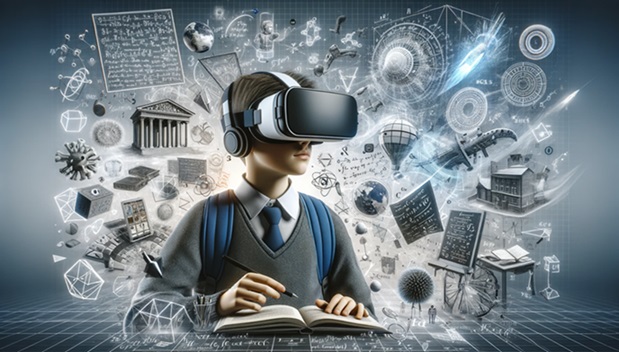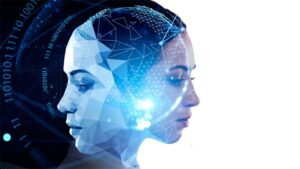Introduction
Virtual Reality (VR) is reshaping education by creating immersive, interactive environments where students can experience learning in three dimensions. Instead of passively absorbing information from textbooks or lectures, learners can now engage with subjects in new ways—whether exploring the solar system firsthand, dissecting a virtual frog, or traveling back in time to historical events. VR bridges the gap between theory and practice, making education more engaging and meaningful.
This article delves into how VR is transforming education, the benefits and challenges of adopting this technology, and the future of VR-based learning.
What is Virtual Reality in Education?
VR involves the use of headsets and interactive tools to simulate real or imaginary environments. Students wear VR headsets to explore 3D spaces where they can look, move, and interact with elements just as they would in the physical world. Some VR experiences are designed for 360-degree videos, while others allow full-scale simulations where users can manipulate objects or collaborate with peers in virtual settings.
Benefits of Virtual Reality in Education
- Immersive Learning Experiences
VR provides immersive environments that make complex topics more understandable. For example, students can explore the human anatomy in 3D instead of relying on flat diagrams. - Experiential Learning
Subjects like history, geography, and science become more engaging when learners can “visit” ancient civilizations or conduct virtual experiments in laboratories, minimizing risks and costs. - Increased Engagement and Motivation
Gamified elements of VR learning promote active participation, keeping students motivated and reducing distractions compared to traditional methods. - Improved Retention and Comprehension
Studies show that students retain more information when they experience learning in a hands-on, interactive way rather than passively reading or listening. - Accessibility and Inclusiveness
VR makes it possible for students with physical limitations to access educational experiences they may not otherwise have, such as field trips or lab experiments.
Use Cases of VR in Different Educational Fields
- STEM Education
- Virtual labs enable students to conduct physics or chemistry experiments in a risk-free setting.
- In biology, VR allows learners to explore complex concepts such as DNA structures or cell biology in a 3D format.
- History and Social Studies
Students can time-travel virtually to experience historical events, such as walking through ancient Rome or attending the signing of the Declaration of Independence. - Medical Education
Medical students benefit from virtual dissections and surgeries, helping them practice techniques without needing cadavers or specialized equipment. - Language Learning
VR offers immersive language environments, such as visiting virtual cafes or markets in Paris, to help learners practice real-world conversations. - Architecture and Engineering
Students in these fields use VR to visualize designs and walk through structures before they are built, improving spatial awareness and design skills.
Challenges in Implementing VR in Education
- Cost of VR Equipment
High-quality VR headsets and software can be expensive, posing a challenge for schools with limited budgets. - Technical Infrastructure
Implementing VR requires robust internet connections and compatible hardware, which might not be available in all regions. - Teacher Training and Familiarity
Educators need training to integrate VR effectively into the curriculum and develop new teaching strategies suited for virtual environments. - Health and Safety Concerns
Extended use of VR can cause eye strain, dizziness, or disorientation, making it necessary to limit screen time. - Access Inequity
Not all students may have equal access to VR equipment, raising concerns about the digital divide.
The Future of VR in Education
The future of VR in education looks promising, with advances in artificial intelligence (AI), augmented reality (AR), and haptic technology enhancing virtual experiences. Some trends that could shape the future include:
- Virtual Classrooms
Students from around the world can join shared virtual spaces to learn together, breaking down geographical barriers. - AI-Powered VR Tutors
AI-based tutors can provide personalized learning experiences, adjusting content based on a student’s progress. - Integration with AR
The combination of AR and VR will allow students to interact with both physical and virtual objects, making learning even more dynamic. - Corporate Training and Lifelong Learning
VR will continue to be a tool not only for schools but also for corporate training, where employees can learn new skills in simulated environments.
Case Study: VR in Action
Example: VR in Medical Education
In 2023, Stanford University introduced VR-based medical training modules where students could practice complex surgeries. This program helped students build confidence by allowing them to practice procedures multiple times in a simulated environment. Reports showed a significant improvement in their real-world performance and reduced anxiety during hands-on operations.
How VR Compares with Traditional Learning
| Aspect | Traditional Learning | VR-Based Learning |
|---|---|---|
| Mode of Delivery | Classroom lectures and books | Interactive 3D simulations |
| Student Engagement | Mostly passive | Highly immersive and active |
| Cost | Lower initial cost | Higher due to VR hardware/software |
| Accessibility | Limited to physical locations | Accessible from anywhere with VR tools |
| Learning Outcomes | Depends on teaching methods | Improved comprehension and retention |
Conclusion
Virtual Reality is revolutionizing education by making learning more immersive, interactive, and accessible. It allows students to experience subjects in ways that traditional methods cannot match, from exploring historical sites to practicing surgeries in a virtual environment. Although challenges remain—such as the cost of equipment and the need for teacher training—the benefits of VR are undeniable.








